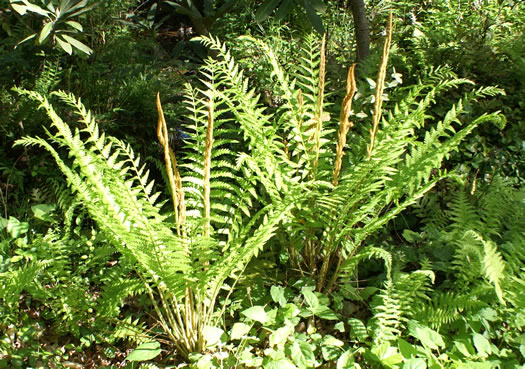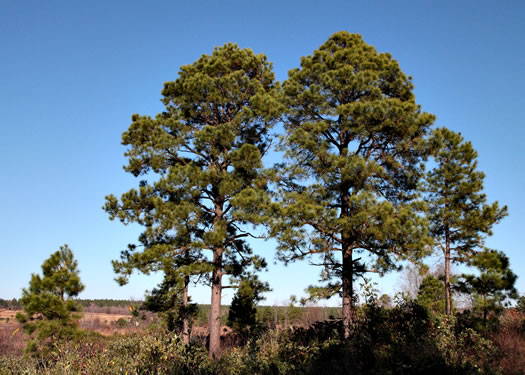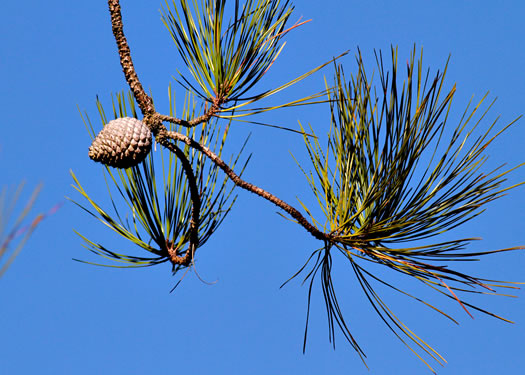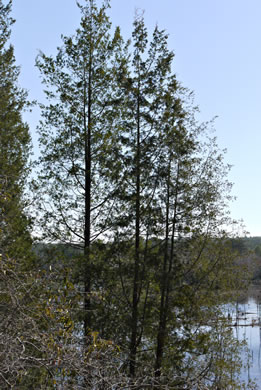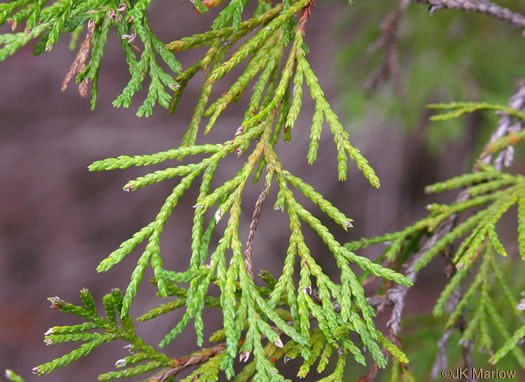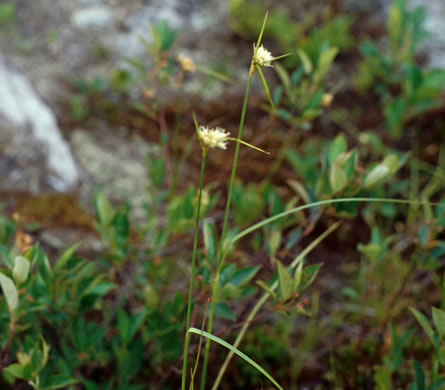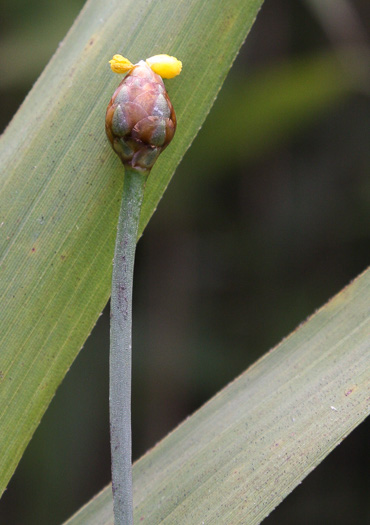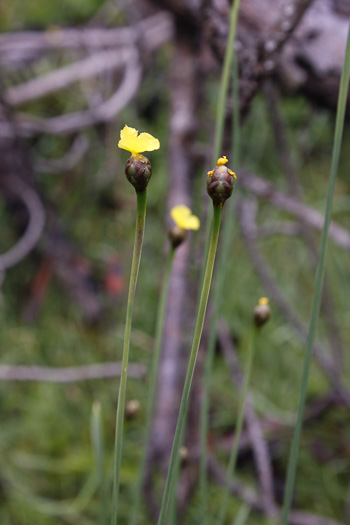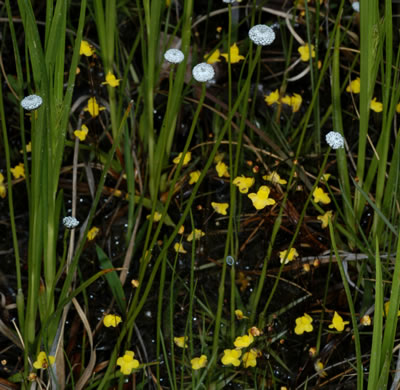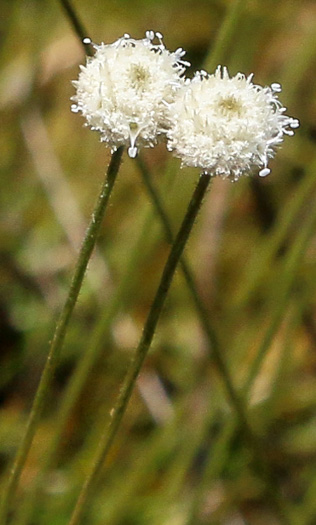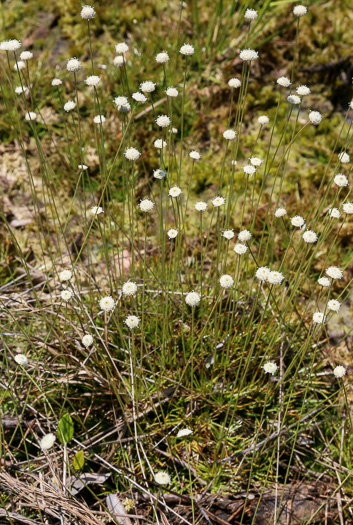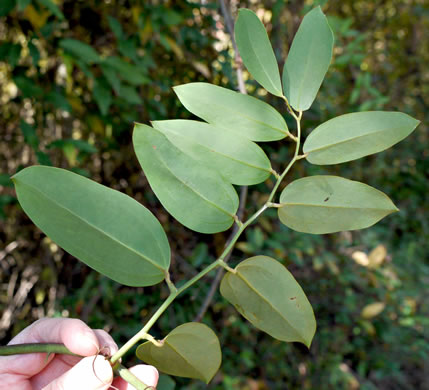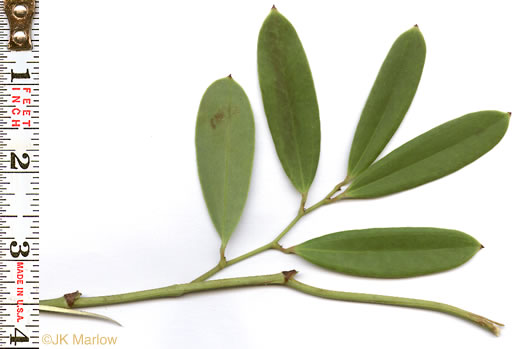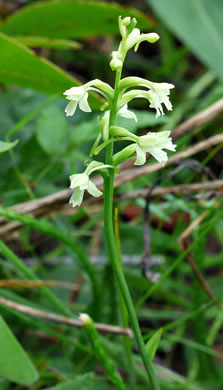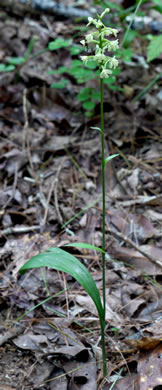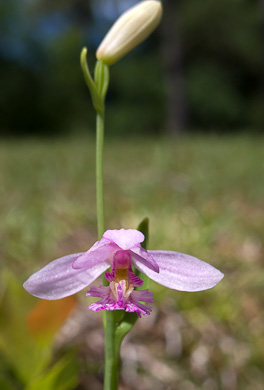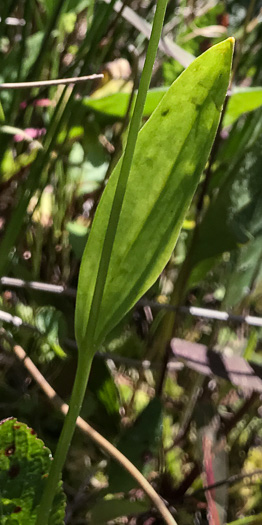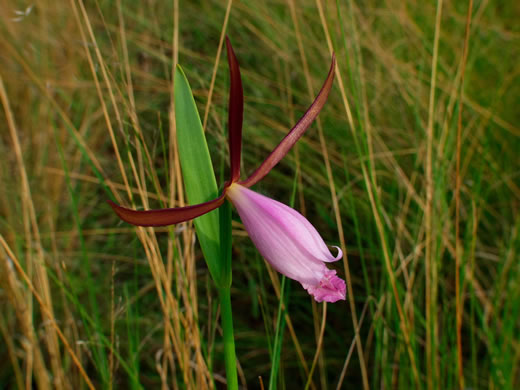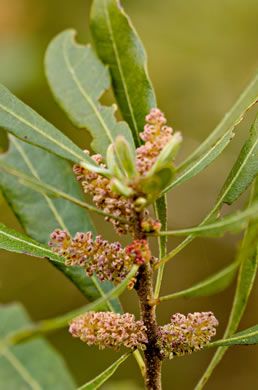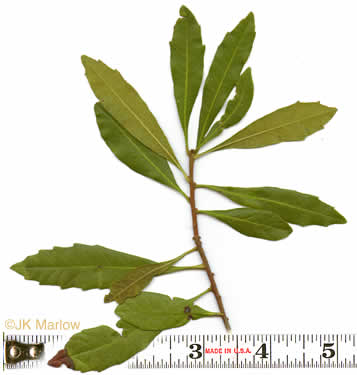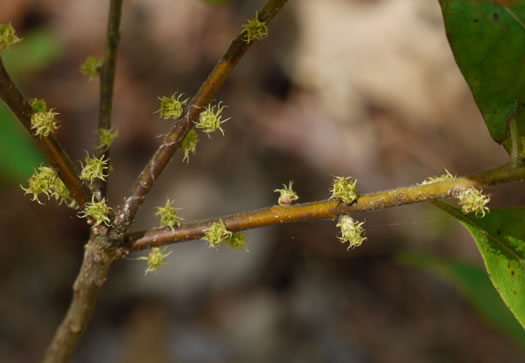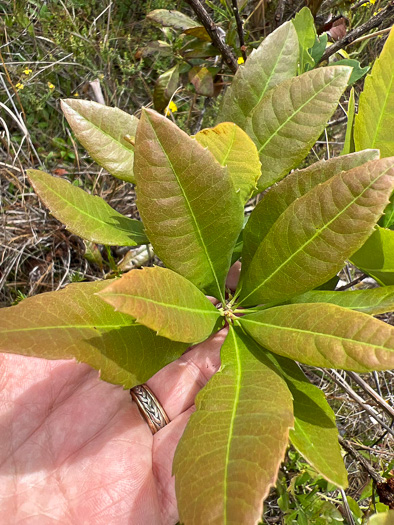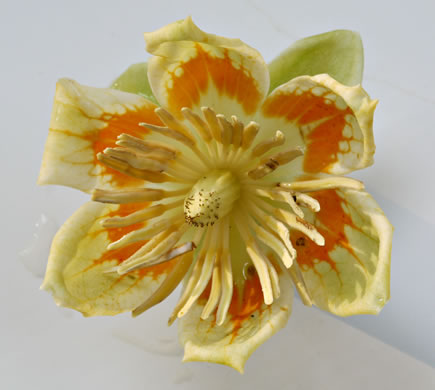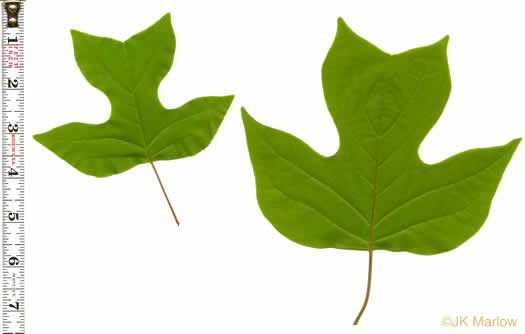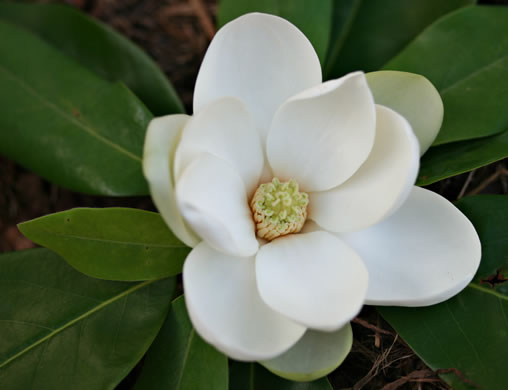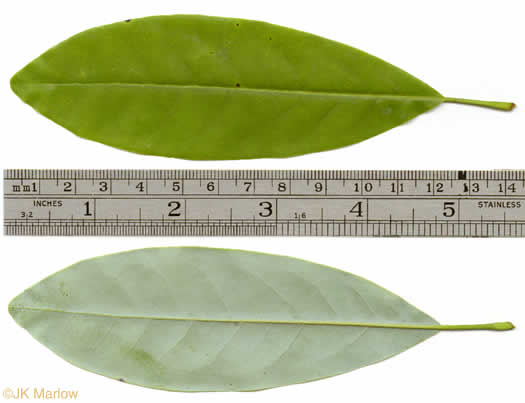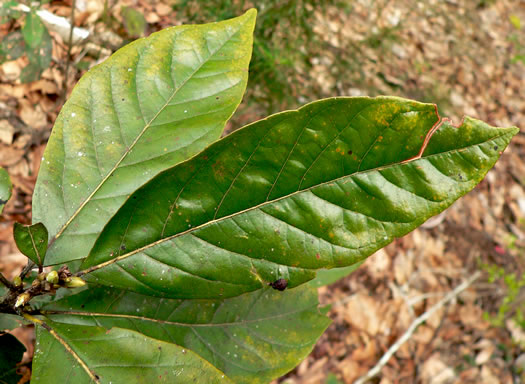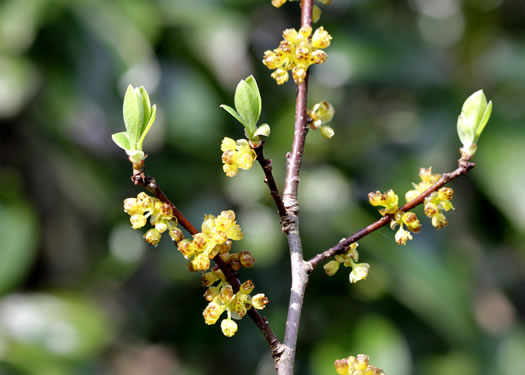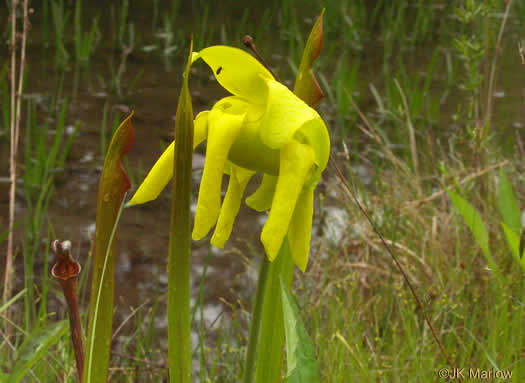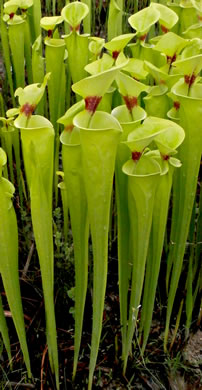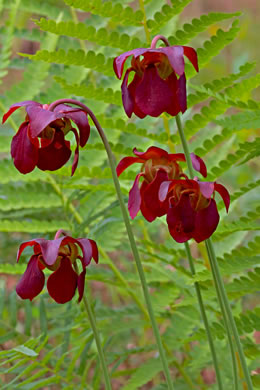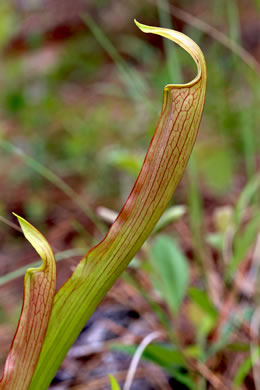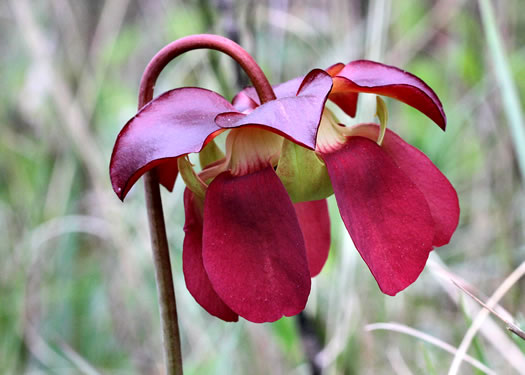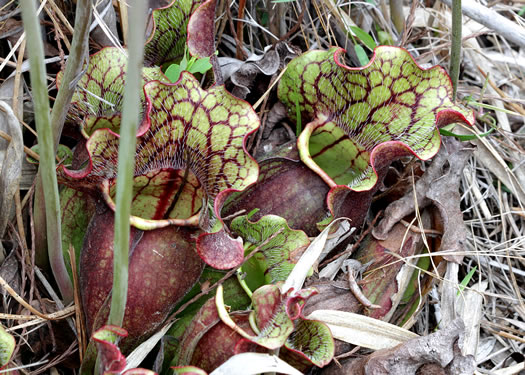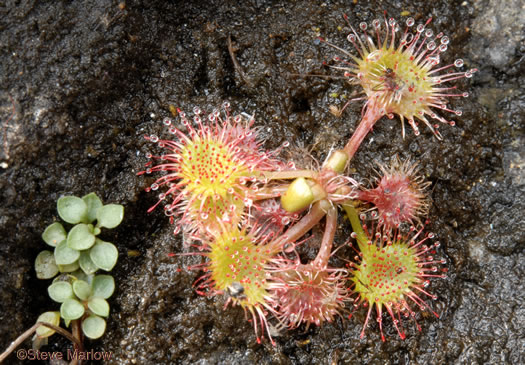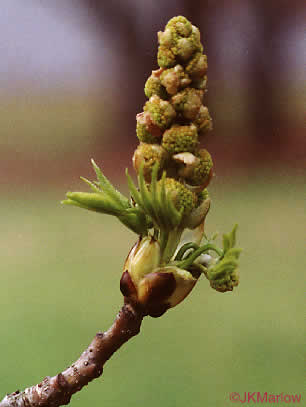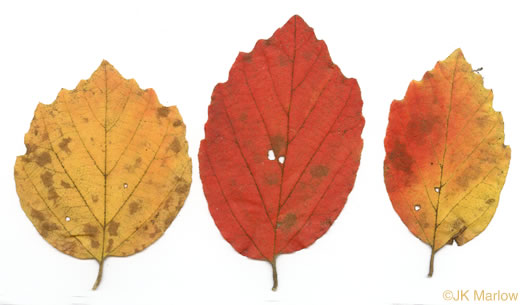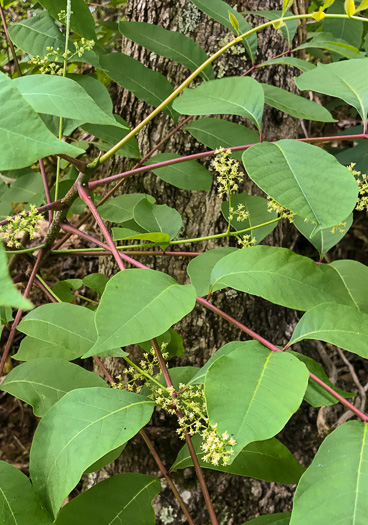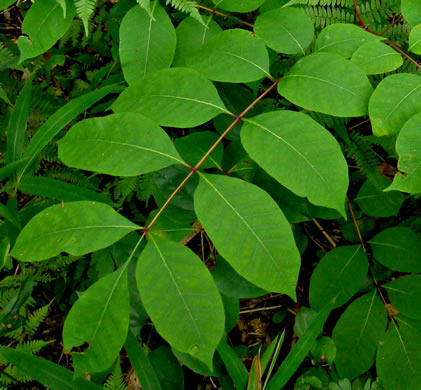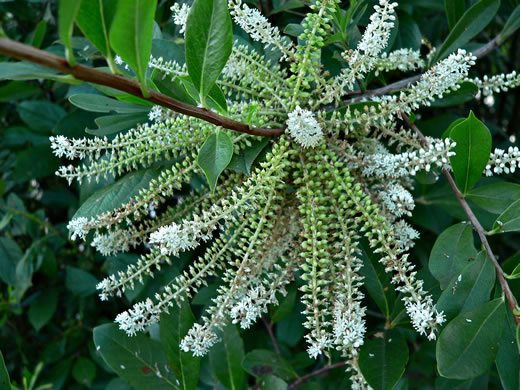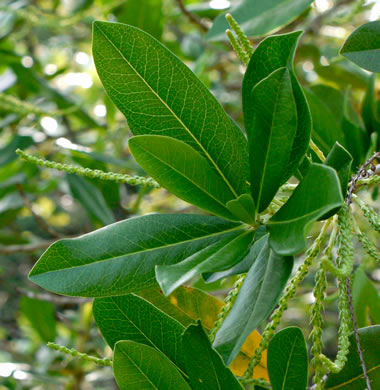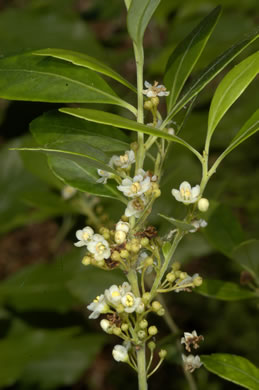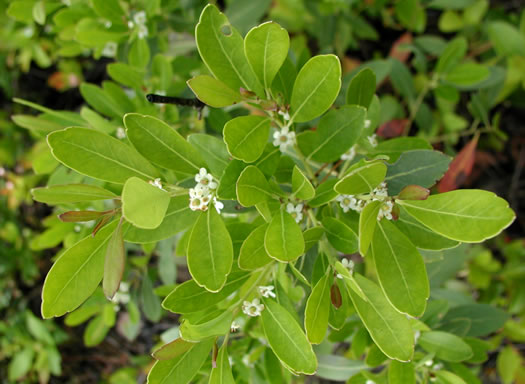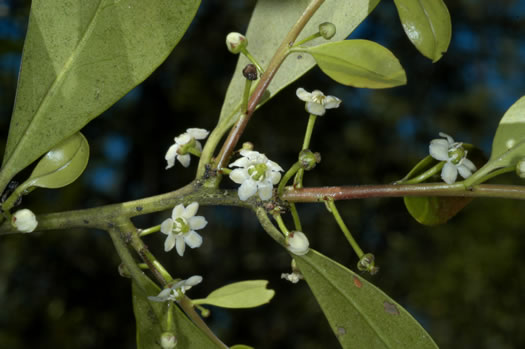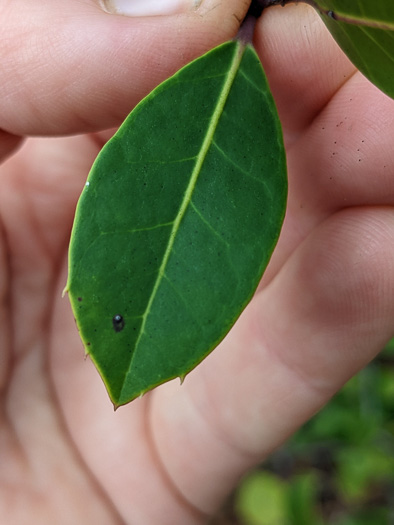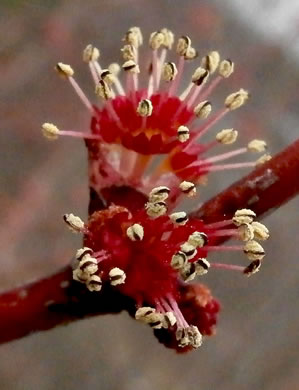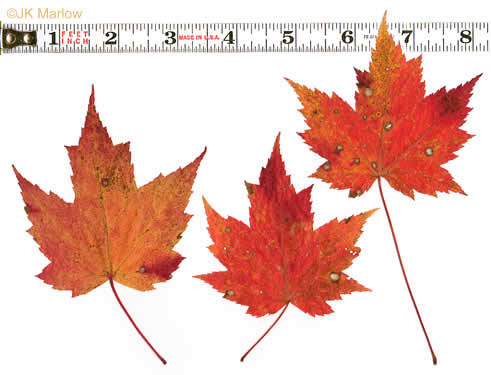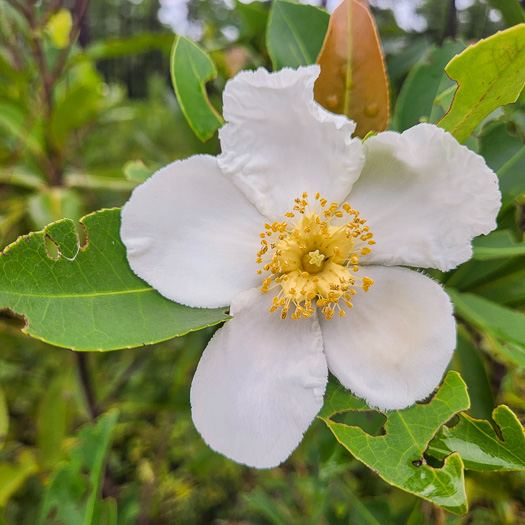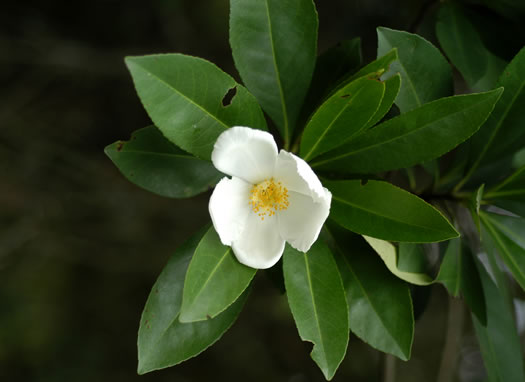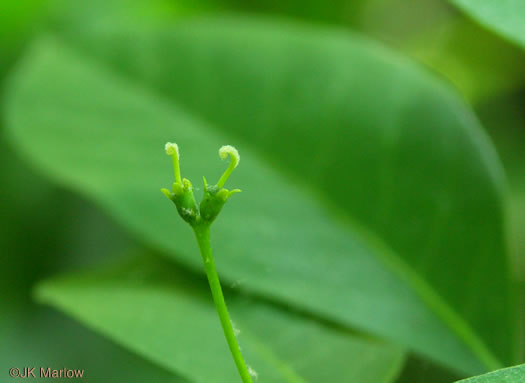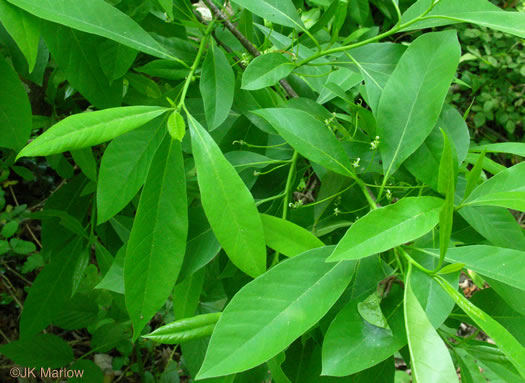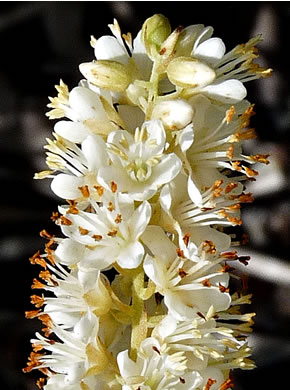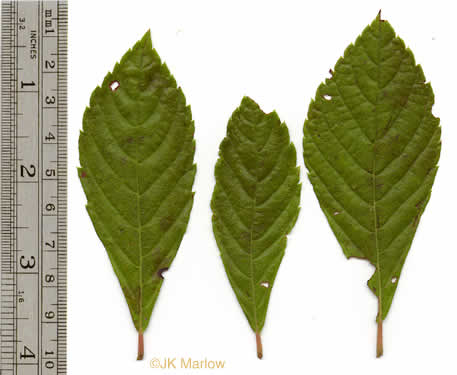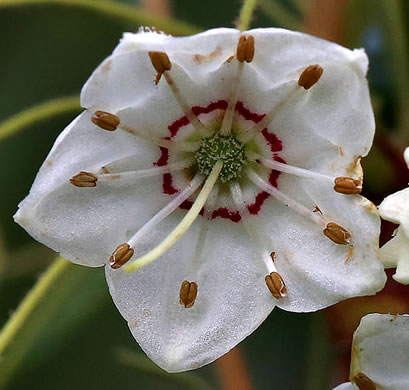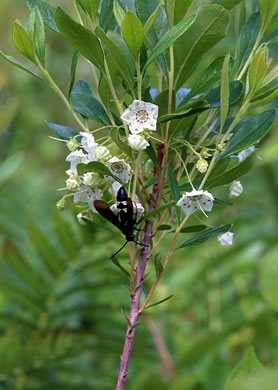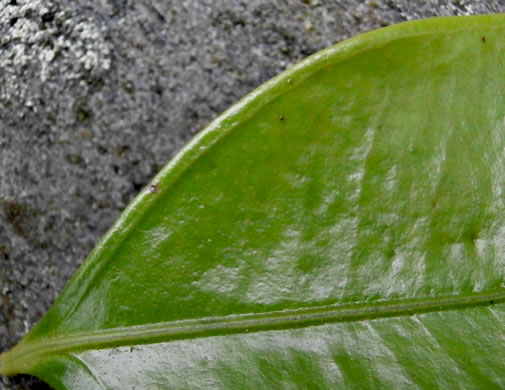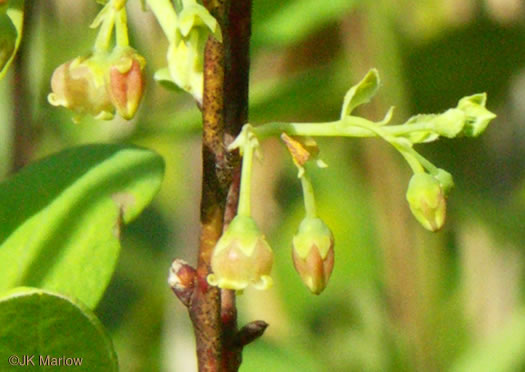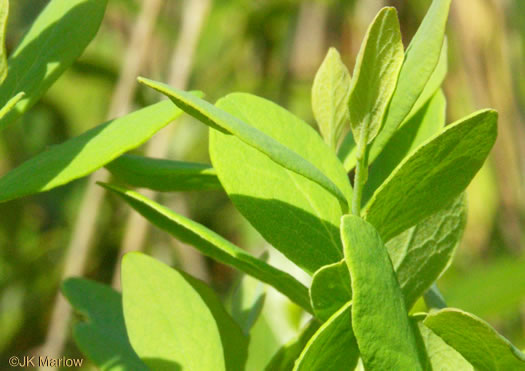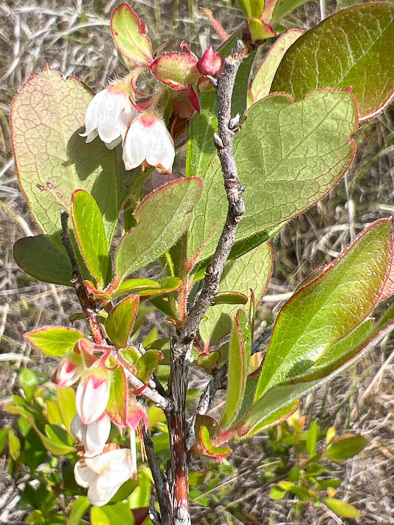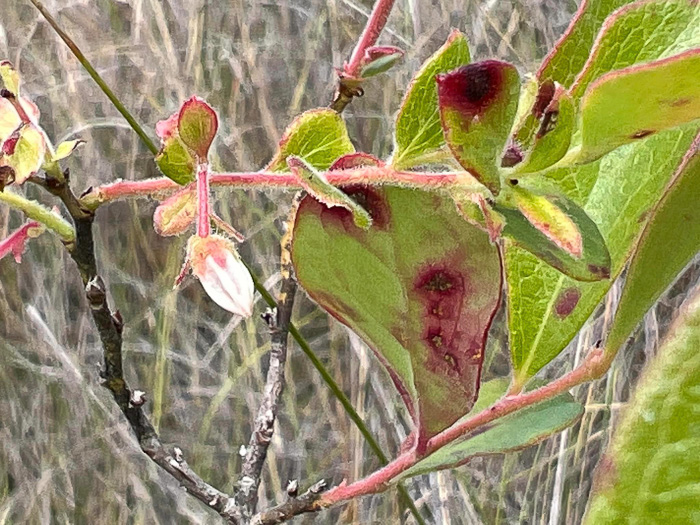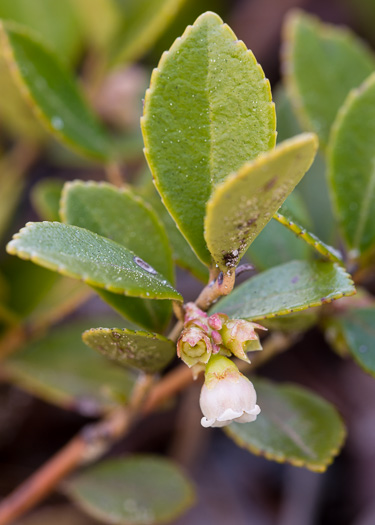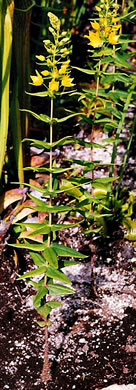South Carolina's Natural Wildflower Communities —
THE FALL-LINE SANDHILLS:
The sandhill seepage communities
Streamhead pocosins
Streamhead pocosins are found along the headwaters of small streams, streamside flats, and extending up hillsides adjacent to streams. This community is most common in the fall-line sandhills, but it does occur in the inner coastal plain. Its presence is dependent on flowing water or seepage from the adjacent uplands. Although these communities tend to be long and narrow, fire seldom burns through the entire community because it tends to be wet. Fire often does burn into its upland margins, and it is in these frequently burned ecotones that most of the unusual species are found.
As in pocosins in general, the canopy of this community is dominated by pond pine (Pinus serotina). However, hardwood species such as
tulip tree,
swamp gum,
red maple,
and even sweet gum
may be abundant because of the overall rarity of fire. Sweet bay and swamp red bay sometime form a distinct subcanopy layer, and occasionally a dense tall shrub layer of mountain laurel is present. An alternative name for pocosin is “evergreen shrub bog,” so it is not surprising that a dense layer of evergreen shrubs is present.
Species especially abundant at the upland ecotone are deciduous species, including
titi,
sweet pepperbush (Clethra alnifolia),
and huckleberry (Gaylussacia frondosa).
Unusual shrubs, generally restricted to the frequently burned ecotones, include
white wicky (Kalmia cuneata),
coastal witch-alder (Fothergilla gardenii),
and pocosin loosestrife (Lysimachia asperulaefolia).
Herbs are sparse, except in rare boggy openings. The dominant herb is probably cinnamon fern (Osmunda cinnamomea), with a variety of pitcher plants, the rare tawny cottongrass (Eriophorum virginicum), and a variety of grasses, sedges and rushes in boggy areas with an open canopy.
Ecotones maintained by regular fires are delightful places to botanize. However, an unburned ecotone and the wetter portions of the community are almost impenetrable because of the dense shrubs and the tangle of bamboo-vine (Smilax laurifolia).
Herbaceous seepages
The sandhills herbaceous seepage community develops where streamheads occur in frequently burned areas. Frequent fires remove the woody vegetation and allow herbaceous species to dominate. This community has been drastically reduced in the sandhills because of fire suppression. With the absence of fire, shrubs and trees move into the community and it is transformed into a streamhead pocosin. The best examples of this community occur on Fort Jackson and the Carolina Sandhills National Wildlife Refuge. One site that is readily available to the public occurs along the edges and within open areas of the Atlantic white-cedar community at Shealy's Pond Heritage Preserve.
This community harbors some of the showiest wildflowers in the sandhills. Look for three species of pitcher-plants and their hybrids:
sweet pitcher-plant (Sarracenia rubra),
frog’s breeches (S. purpurea var. venosa),
and yellow trumpet pitcher-plant (S. flava).
There are also
several species of sundews,
three orchids — small green wood-orchid (Platanthera clavellata),
rose pogonia (Pogonia ophioglossoides),
and spreading pogonia (Cleistes divaricata),
several species of bladderworts (Utricularia spp.),
Collins' sedge (Carex collinsii),
and yellow hatpins (Syngonanthus flavidulus).
Several species endemic to this community can be seen, which is a testimony to its natural and historical occurrence in the sandhills and include
scabrous-leaved xyris (Xyris scabrifolia),
Chapman's xyris (Xyris chapmanii),
and Texas pipewort (Eriocaulon texense).
Also present are several species that are disjunct between the mountains and coastal plain, including round-leaf sundew (Drosera rotundifolia).
Atlantic white-cedar forests
The Atlantic white-cedar forests share many of the same species as pocosin and streamhead pocosin communities, but the thick canopy dominated by Atlantic white-cedar (Chamaecyparis thyoides) easily distinguishes it from these closely related communities. Atlantic white-cedar forests may occur in Carolina bays or other depressions in the coastal plain, but they are best developed in the fall-line sandhills at sites with an abundance of flowing water or seepage. If a site has enough seepage and moist soils to retard the regular invasion of fires that originate in the adjacent sandhills and if a source of Atlantic white-cedar seeds is readily available, then an Atlantic white-cedar forest forms. A high water table, peaty, acid soils, abundant sphagnum moss, and long fire cycles (50-150 years) are additional distinguishing characteristics of the community.
The canopy of this natural community is typically dense and dominated by Atlantic white-cedar, with pond pine (Pinus serotina), red maple, swamp gum, and tulip tree present. Hardwoods become more abundant as the community ages. The presence of tulip tree helps distinguish it from closely related pocosin communities. The three species of bays,
sweet bay,
swamp red bay,
and loblolly bay,
dominate the subcanopy layer. The shrub layer is dense and dominated by evergreen species typical of pocosins, especially
fetterbush (Lyonia lucida),
titi (Cyrilla racemiflora),
two species of Myrica (M. cerifera var. cerifera and M. heterophylla),
and two species of holly (inkberry, Ilex glabra, and Ilex coriacea).
Rare shrubs to look for include
Mosier’s huckleberry (Gaylussacia mosieri),
bog spicebush (Lindera subcoriacea),
and Rayner’s blueberry (Vaccinium sempervirens).
Poison sumac (Rhus vernix) is usually present.
South Carolina's Natural Wildflower Communities is adapted from A Guide to the Wildflowers of South Carolina by Richard D. Porcher and Douglas A. Rayner. Used by permission.
To see pictures or additional information about a particular plant, click its name or its picture.

